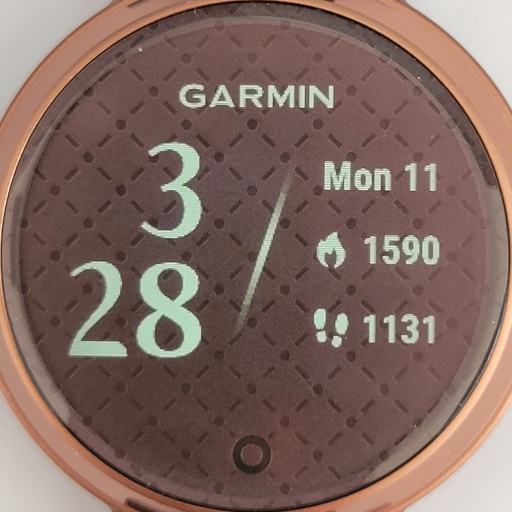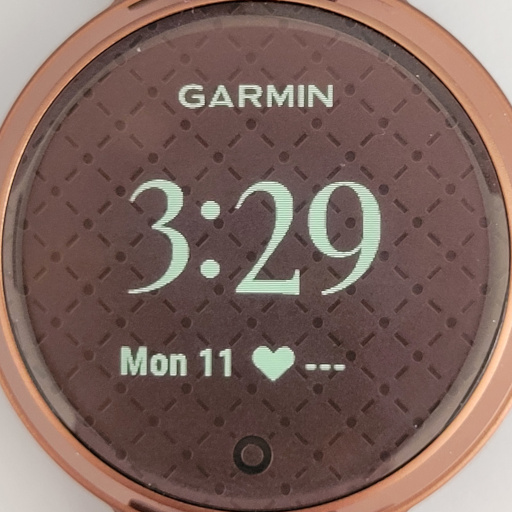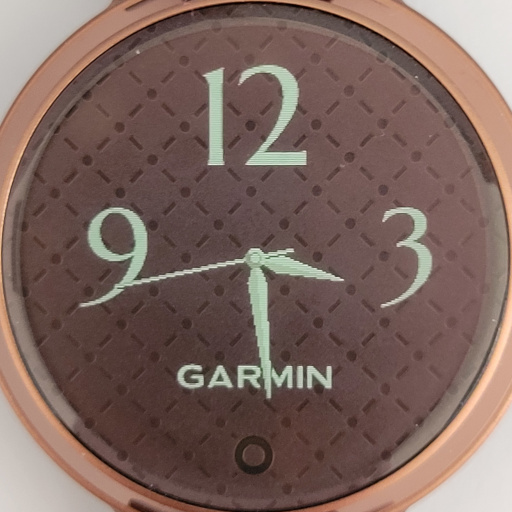There is an ongoing debate in some parts of the Internet about how much
space should go after the end of a sentence. Practically every publisher
and quite a lot of other people will say there should be one space. A
minority of people—principally Gen X and older, I suspect—will say there
should be two spaces.
I have opinions.
In short: Two spaces are too much. One space is okay, but it can feel a
little crowded. Adding just a little extra space—about 33 percent
more—after a sentence gives a nice balance. This blog does the latter.
§ A Brief History of Sentence Spacing
In the earliest days of the printing press, the standard among typesetters
was to have about three times more space between sentences than between
words. But even their inter-word spaces were much larger than we use
today. In numeric terms, there was a space of one em between sentences,
and one-third of an em between words. An “em”, for our purposes, is
simply a unit of measurement in printing that scales in proportion to the
size of the type. For example, text set at 72 points will have an em size
of one inch, while 36 point text will have an em size of half an inch.
This proportionality makes the em a convenient reference for the sizes of
things in typeset text.
Here’s how those earliest spacing conventions might look with some sample
text:
As Gregor Samsa awoke one morning from uneasy dreams, he found himself transformed in his bed into a gigantic insect. When he lifted his head a little, he could see his dome-like brown belly. The bed quilt could hardly keep in position and was about to slide off completely. His numerous legs, which were pitifully thin compared to the rest of his bulk, waved helplessly before his eyes. It was no dream. His room, a regular human bedroom, only rather too small, lay quiet between the four familiar walls.
When typewriters, with their fixed character widths, became common, people
tried to adapt printing rules that had been developed for proportional
typefaces. Typewriters’ fixed-width spaces were a little larger than the
printers’ third-of-an-em proportional-type spaces. Typing conventions
eventually settled on a single fixed-width space between words and two
fixed-width spaces between sentences.
If it were typed according to these rules, our sample text would look
something like this:
As Gregor Samsa awoke one morning from uneasy dreams, he found himself transformed in his bed into a gigantic insect. When he lifted his head a little, he could see his dome-like brown belly. The bed quilt could hardly keep in position and was about to slide off completely. His numerous legs, which were pitifully thin compared to the rest of his bulk, waved helplessly before his eyes. It was no dream. His room, a regular human bedroom, only rather too small, lay quiet between the four familiar walls.
During the twentieth century, publishers gradually began to close up
spacing in their printing, both between words and between sentences. In
the first part of the century, inter-word spacing remained roughly a third
of an em, but inter-sentence spacing shrank to half an em. That gave
something along these lines:
As Gregor Samsa awoke one morning from uneasy dreams, he found himself transformed in his bed into a gigantic insect. When he lifted his head a little, he could see his dome-like brown belly. The bed quilt could hardly keep in position and was about to slide off completely. His numerous legs, which were pitifully thin compared to the rest of his bulk, waved helplessly before his eyes. It was no dream. His room, a regular human bedroom, only rather too small, lay quiet between the four familiar walls.
During the second half of the twentieth century, professional publishers
continued to close up inter-word and inter-sentence spacing. By the end
of the century, most publications used just a quarter of an em between
both words and sentences. I have seen speculation that the convergence
between inter-word and inter-sentence spacing grew out of increasing use
of automated typesetting. (“Two Spaces - an Old Typists'
Habit?” gives a brief history of automated
typesetting and makes a plausible case for how the extra inter-sentence
space was lost.)
This sort of spacing is what you’re almost certainly used to seeing
everywhere, but here’s what it looks like with our sample text:
As Gregor Samsa awoke one morning from uneasy dreams, he found himself transformed in his bed into a gigantic insect. When he lifted his head a little, he could see his dome-like brown belly. The bed quilt could hardly keep in position and was about to slide off completely. His numerous legs, which were pitifully thin compared to the rest of his bulk, waved helplessly before his eyes. It was no dream. His room, a regular human bedroom, only rather too small, lay quiet between the four familiar walls.
Now, well into the twenty-first century, pretty much every newspaper,
magazine, and book publisher uses the same amount of space between
sentences as between words, and that space is generally about a quarter of
an em. Every major style guide recommends typing a single space after a
sentence. The only significant exceptions, as far as I can tell, are
scientific journals that use LaTeX for their typesetting (and which
haven’t explicitly turned off LaTeX’s extra inter-sentence spacing).
§ Readability Studies
Practically every study done on the readability effects on end-of-sentence
spacing has been inconclusive. The one exception is “Are two spaces
better than one?” by Johnson, Bui, and Schmitt. That study
purported to find that putting two spaces after sentences improved
readability exclusively for people who themselves put two spaces after
sentences when writing. The findings are even weaker than that summary
implies, however, for reasons that are covered well by Matthew
Butterick. In short, the test conditions were
well outside normal reading conditions and there were unexplored
statistical differences between the overall reading abilities of one- and
two-space-using readers.
In other words, no one has really demonstrated a tangible benefit to any
variation of end-of-sentence spacing.
§ Aesthetics
So that leaves just the question of aesthetics. What looks good?
As noted previously, nearly every newspaper, magazine, and book you read
uses the same amount of space at the end of a sentence as between words.
Nearly every website you read is the same, unless the website author has
gone out of their way to do something different. Everyone reads things
with just one space between sentences all the time, so there’s the
aesthetics of familiarity, if nothing else.
My personal view is a little more nuanced than just one space versus two.
Using a single space is servicable and two spaces are probably a bad idea,
but I think I can do better than either.
Let’s look again at our example text with one space after each sentence:
As Gregor Samsa awoke one morning from uneasy dreams, he found himself transformed in his bed into a gigantic insect. When he lifted his head a little, he could see his dome-like brown belly. The bed quilt could hardly keep in position and was about to slide off completely. His numerous legs, which were pitifully thin compared to the rest of his bulk, waved helplessly before his eyes. It was no dream. His room, a regular human bedroom, only rather too small, lay quiet between the four familiar walls.
I find that readable, but it also feels a bit crowded. The sentences seem
to run together without any room to breathe.
Let’s put two spaces after each sentence and see how that looks:
As Gregor Samsa awoke one morning from uneasy dreams, he found himself transformed in his bed into a gigantic insect. When he lifted his head a little, he could see his dome-like brown belly. The bed quilt could hardly keep in position and was about to slide off completely. His numerous legs, which were pitifully thin compared to the rest of his bulk, waved helplessly before his eyes. It was no dream. His room, a regular human bedroom, only rather too small, lay quiet between the four familiar walls.
To me, that feels like too much space. As I read the paragraph, the extra
space between sentences feels almost like an interruption each time.
I mentioned earlier that some publishers still use LaTeX’s inter-sentence
spacing. In particular, LaTeX allocates 33 percent more space at the end
of a sentence than it does between words. (For very specific numbers, see
this Stack Exchange answer on the topic.) If a standard
inter-word space is now a quarter of an em, that should lead to
inter-sentence spacing of a third of an em. Here’s what that looks like:
As Gregor Samsa awoke one morning from uneasy dreams, he found himself transformed in his bed into a gigantic insect. When he lifted his head a little, he could see his dome-like brown belly. The bed quilt could hardly keep in position and was about to slide off completely. His numerous legs, which were pitifully thin compared to the rest of his bulk, waved helplessly before his eyes. It was no dream. His room, a regular human bedroom, only rather too small, lay quiet between the four familiar walls.
Personally, I like that balance of spacing. There’s a very slight extra
bit of space between sentences, but not enough that it really draws
attention to itself. This is often the sort of spacing I use when I’m
writing longer-form things in HTML that don’t need to adhere to some
surrounding style conventions. For reference, I’m using Unicode character
U+2004 THREE-PER-EM SPACE between
sentences. It can be represented in HTML using the XML entity  .
But I actually do something slightly different on this blog. Because I’m
picky about a variety of minutiae, I want this blog to look “right”
(according to me) in all sorts of environments, including in text-mode web
browsers (and, I guess, in other browsers that use monospaced fonts). So
this blog ends sentences with a combination of a regular space character
and U+2009 THIN SPACE (or  ). In a
monospaced font, those will be shown as two full-width spaces. In
proportional fonts, the thin space is typically somewhere between a sixth
and a fifth of an em. In the font I use, it’s closer to a fifth.
Consequently, in most browsers those two spaces will add up to just a tiny
bit more than my preferred total of a third of an em between sentences.
That combination of spaces looks like this (and also like every regular
bit of text on this blog):
As Gregor Samsa awoke one morning from uneasy dreams, he found himself transformed in his bed into a gigantic insect. When he lifted his head a little, he could see his dome-like brown belly. The bed quilt could hardly keep in position and was about to slide off completely. His numerous legs, which were pitifully thin compared to the rest of his bulk, waved helplessly before his eyes. It was no dream. His room, a regular human bedroom, only rather too small, lay quiet between the four familiar walls.
§ External Links
The Chicago Manual of Style, a fairly conservative style guide, has a blog
article about their one-space recommendation, as well as
their own history of sentence spacing in publishing.
The Associated Press Stylebook doesn’t have anything online that’s
publicly accessible, but a Journalist’s Resource basic guide to the AP
style summarizes the guidance as, “Use only one space after
the end of a sentence. Period.”
The Modern Language Association, whose style guide is used in many
academic settings, says to use one space after a period
unless specifically directed otherwise by an instructor.
The American Psychological Association, one of the last holdouts for using
two spaces after a sentence, updated their guidelines in
2019 to recommend a single space.
Microsoft Word started flagging two-space sentences as
errors in 2020.
Matthew Butterick, a well-regarded typographer online, calls the use of
two spaces a “typewriter habit”—a holdover from the
days of typewriters that no longer serves any useful purpose.
It’s a little difficult to find a comprehensive online LaTeX reference
about its sentence spacing. It doesn’t help that many LaTeX people seem a
bit bitter about the ubiquity of using a single space to separate
sentences. (For example.) Probably some of
the most thorough coverage is in (some of) the answers to the TeX Stack
Exchange question “Double space between sentences”.
§ In Conclusion
Don’t type two spaces after sentences in a medium with a
proportionally-spaced font. The closest typographic convention to this
practice hasn’t been in use professionally for over a century, and it
doesn’t look great alongside modern fonts and typography.
If your only choices are between using two standard spaces and a single
standard space after your sentences, use the single space.
In many environments, the choice between one and two spaces is a false
dichotomy. If you can, try adding just a little extra space between your
sentences. I find that sentences look good with about 33 percent more
space between them than between the words they contain. I probably
wouldn’t add more than about 50 percent of my inter-word spacing to the
ends of my sentences.







